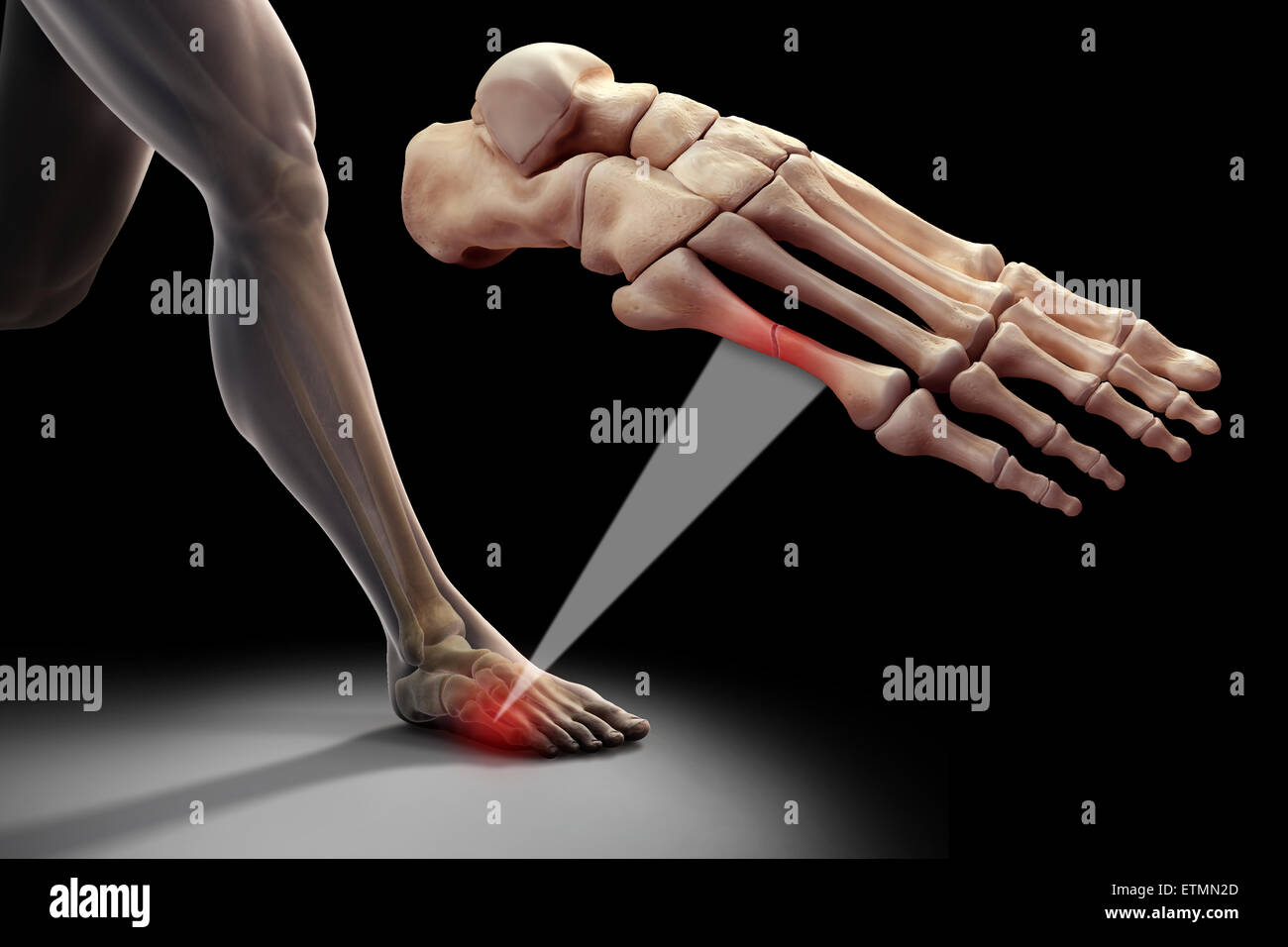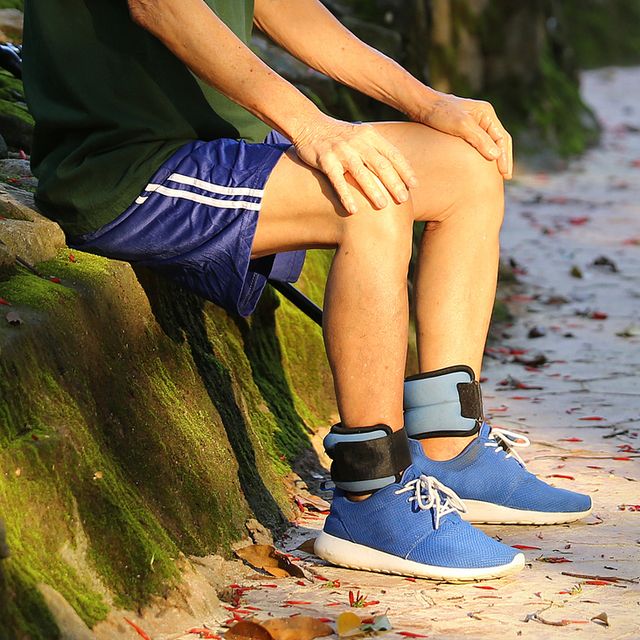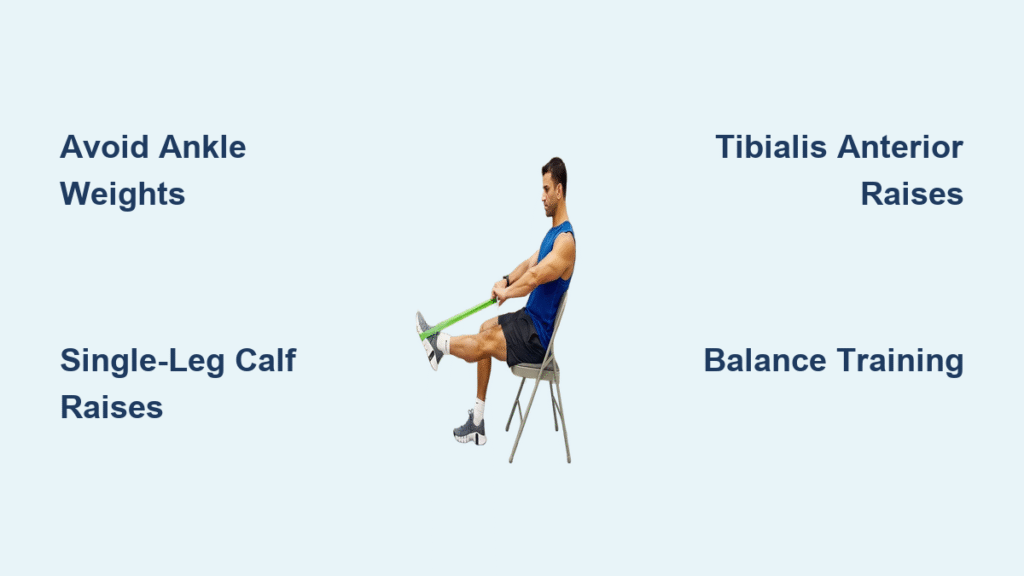Your ankles absorb forces 3-5 times your body weight with every footstrike. Yet most runners completely ignore this critical joint until pain strikes. Weak ankles force your knees, hips, and back to compensate, creating a domino effect of injuries that can derail your training. Strong ankles aren’t just about injury prevention—they’re your hidden performance booster, improving running economy by 5% and adding spring to your stride.
This guide cuts through the misinformation about ankle weight training and delivers science-backed strengthening protocols that actually work for runners. You’ll discover why ankle weights during running cause more harm than good and get 12 targeted exercises that build bulletproof ankles without risking your running career.
Why Ankle Strength Determines Your Running Success (or Failure)

Your ankles aren’t simple hinges but complex shock absorbers where 26 bones, 33 joints, and over 100 muscles, tendons, and ligaments work together. Weak ankles transfer excessive stress to your knees, hips, and back—explaining why 70% of running injuries originate from poor ankle stability. The tibialis anterior (shin muscle) and peroneals (outside ankle muscles) become critically important for trail runners navigating uneven terrain.
Warning sign: If you’ve ever rolled an ankle during a run, your stability muscles are significantly underdeveloped. Recurrent sprains become 7x more likely after your first injury due to compromised proprioception—the body’s ability to sense joint position.
The Critical Link Between Ankle Strength and Running Economy
Strong ankles create a more efficient energy return system. Think of them as springs: stiff springs (weak ankles) absorb energy, while strong springs (healthy ankles) return energy with each stride. This is why elite runners consistently demonstrate 20-30% greater ankle strength than recreational runners. The soleus muscle (deep calf) becomes particularly crucial for endurance runners, as it’s fatigue-resistant and handles 80% of propulsion during long runs.
The Dangerous Myth of Ankle Weight Training for Runners

Despite the keyword search popularity, running with ankle weights creates more problems than solutions. The added load alters your natural gait mechanics, increasing stress on your back, hips, knees, and ankles by up to 40%. This mechanical compensation often leads to hip flexor strain, IT band syndrome, or stress fractures.
Why Ankle Weights Backfire for Runners
- Gait disruption: Added weight changes your natural stride length and cadence
- Joint overload: Forces increase exponentially at knees and hips due to lever arm effect
- Muscle imbalances: Overdevelops certain muscles while underutilizing stabilizers
- Tendon stress: Places unnatural strain on Achilles tendon during push-off
Safer alternative: Use a weighted vest (weight distributed near your center of gravity) for 10-15% of your total training volume if you want resistance running. Never exceed 5% of body weight in vest weight.
5 Foundational Ankle Strengthening Exercises Every Runner Needs
Single-Leg Calf Raises: The Running-Specific Power Builder
Stand on one leg with a slight bend in your knee. Rise onto your tiptoes slowly, hold for two seconds, then lower with control over 3 seconds. Aim for 3 sets of 15-20 reps per leg daily.
Key distinction: Unlike standard calf raises, the single-leg version mimics your running stride’s support phase. When you can complete 20 perfect reps without wobbling, progress to doing this off a step edge for greater range of motion.
Tibialis Anterior Raises: Your Shin Splint Prevention Secret
Sit with legs extended and loop a resistance band around your foot. Pull your toes toward your shin against resistance. Perform 3 sets of 15 reps per foot every other day.
Critical indicator: If you experience cramping before completing 10 reps, your tibialis anterior is significantly weak—making you vulnerable to shin splints. This muscle controls your foot’s landing phase, preventing excessive pronation.
Banded Ankle Eversion: The Trail Runner’s Stability Essential
Anchor a resistance band to a sturdy object. Loop the band around the outside of your foot. Move your foot outward against resistance, targeting the peroneal muscles that prevent ankle rolls. Perform 3 sets of 15 reps per direction.
Pro tip: Keep your knee straight during this movement to maximize lateral ankle engagement—crucial for navigating rocky trails and uneven surfaces.
Standing Arch Raises: The Forgotten Foot Strengthener
While standing normally, actively lift your foot’s arch without curling your toes. Hold for 5 seconds, relax, and repeat. Aim for 3 sets of 12-15 reps per foot daily.
Visual cue: Imagine trying to grip the floor with your foot’s arch. This strengthens intrinsic foot muscles that provide stability during push-off and help distribute impact forces.
Eccentric Calf Raises: The Downhill Running Protector
Stand on both feet and rise onto tiptoes. Shift your weight to your right leg and slowly lower your heel over 5 seconds. Return to both feet and repeat on the left. Complete 4 sets of 10 reps.
Progression path: Start bilateral → progress to unilateral → add dumbbells → use step edge. The slow lowering phase specifically strengthens your Achilles tendon for downhill running.
Advanced Stability Training to Prevent Ankle Rolls on Trails
Single-Leg Balance Progressions: Your Proprioception Power-Up
Stand on one leg for 30-60 seconds. Once mastered, close your eyes or stand on a folded towel. This develops the neuromuscular control essential for trail running on uneven surfaces.
Daily integration: Practice while brushing your teeth or waiting in line. Your goal: 60 seconds eyes-closed balance per leg—this indicates excellent ankle stability.
Triangle Hops: The Multi-Directional Control Builder
Stand on your right leg. Hop forward 75cm, then hop 75cm left, then hop back to start. Keep your torso upright and land softly on your forefoot. Complete 6 triangles per leg.
Focus point: This exercise builds the lateral stability missing from standard running, preparing your ankles for unexpected trail obstacles and sudden direction changes.
How to Integrate Ankle Training Into Your Daily Routine
Transform mundane activities into ankle-strengthening opportunities. Perform single-leg calf raises while your coffee brews or during TV commercials. Keep a resistance band in your desk drawer for quick ankle inversion/eversion sets during work breaks.
Office-friendly routine: Complete 3 sets of 15 ankle eversion/inversion reps during conference calls. This takes less than 2 minutes but delivers significant cumulative benefits.
Your Progressive 6-Week Ankle Strengthening Plan
Weeks 1-2: Foundation Building
- Single-leg balance: 3×30 seconds each leg
- Tibialis raises: 3×15 every other day
- Basic calf raises: 3×15 daily
Weeks 3-4: Stability Enhancement
- Single-leg calf raises: 3×12 each leg
- Banded ankle movements: 3×15 each direction
- Standing arch raises: 3×12 each foot
Weeks 5-6: Power Integration
- Eccentric calf raises: 4×10 each leg
- Triangle hops: 6 triangles per leg
- Medicine ball throws: 2×20 each leg
Progression rule: Only advance when you can complete all reps with perfect form. Quality trumps quantity for ankle strengthening.
Performance Monitoring System for Injury Prevention
Track your progress with simple metrics:
– Balance test: Time you can stand on one leg with eyes closed (goal: 60 seconds)
– Strength test: Single-leg calf raises to fatigue (goal: 25 perfect reps)
– Functional test: Pain-free running on technical terrain for 30 minutes
Red flag indicators: If you experience sharp pain, significant swelling, or can’t bear weight, stop immediately. Strong ankles shouldn’t hurt during or after proper strengthening exercises.
Strong ankles create faster, more resilient runners. By dedicating just 10 minutes daily to these targeted exercises, you’ll run with greater confidence, improved economy, and significantly reduced injury risk. Your future self—logging miles without ankle pain—will thank you for starting today. Remember: ankle weights during running create more problems than they solve, but strategic ankle strengthening delivers real performance benefits without the injury risk.





